On the one hand I’m very happy to be covering Seirei no Moribito, because it’s the first chance I’ve had to really analyze the greatness of this series in detail (because of my aforementioned late start, I even missed the discussions on Animesuki). But on the other I do worry about fawning over it too much. It’s a trap I can’t avoid no matter how clearly I see it, because of my boundless admiration for this series. I’ll criticize where I see the need but honestly, I don’t see it very often with Moribito.
I think this time around calling out a particularly special moments is a good way to go, because the entire episode is sublime and you can only say that so may ways…
- First, Chagum stopping Balsa when they were about to leave so that he could thank Tanda, Touya, and Saya for taking care of him. That was such a humble and beautiful act from a boy who’s been raised in a life of unimaginable privilege. Character development is organic and subtle in this story, obviously, and the way Chagum’s nobility of soul is revealed over time is one of Moribito’s great triumphs.
- The Hunters engaging in silent meditation as a way to try and outflank Balsa. This stamps them as atypical warriors to say the least – as chaos is raging all around them and half the country is at their disposal, Mon calls for silent reflection. He then follows this up by expressing his admiration for Balsa, despite his being their “enemy”.
- It’s also interesting to watch Jin and Mon puzzle over Balsa’s refusal to kill them when she had the chance, for which they can find no logical explanation. If she had indeed done so, she and Chagum would likely have escaped already.
- Tanda’s rant when the two foot soldiers come to the hut asking about Balsa is one of the most simultaneously hilarious and tragic moments in anime. It’s remarkable how well we already feel we know the relationship between Tanda and Balsa, despite being told almost no details about it.
- The chase sequence in the Aogiri Mountains, while splendid and using relatively minimal CGI, is a bit hard to deconstruct at first viewing. The key, of course, is Chagum’s manner of dress in the last few shots of him before the wolf attacks. The place for the attack was carefully chosen (the “valley of deadly mists”). Torogai’s grief over the fate of the horse is another crack in the steely facade she shows to the world.
- Finally, the funeral procession scene is… magnificent. I can’t use any lesser word for it – the rhythmic drums and movements of the process, the scale, of course these are stunning. But it’s an incredibly personal moment too, as we (wordlessly, as is so often the case with this series) see what it represents for Chagum. He’s watching his own funeral procession, in the knowledge that his father wants him dead. This is also the reunion of Tanda and Balsa of course, where there are a few well-chosen words. Only great fiction can be epic and intimate in the same moment in this way.
I find myself repeatedly becoming a bit emotional in watching Seirei no Moribito this time around (as every time, but maybe more so than ever) not just by the character interactions, but by the sheer brilliance of what I’m seeing. As a person who loves anime deeply and take a somewhat despairing view of the broad trends in the medium at the moment, to see a display of just how superb it can be does impact me deeply. What passionate and talented people are given license to tell a great story as it should be told, anime need take a back seat to no art form, and it’s good to be reminded of that.






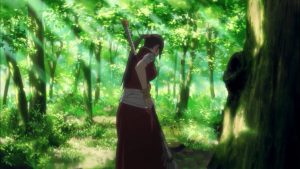

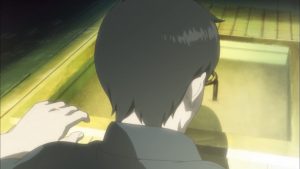
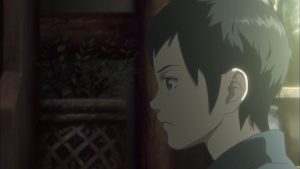
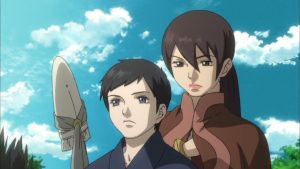
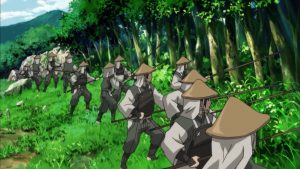

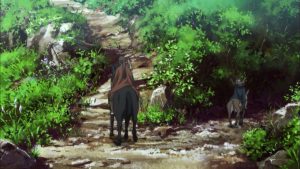
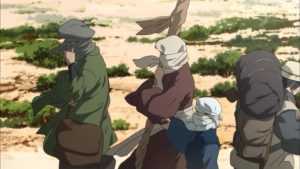



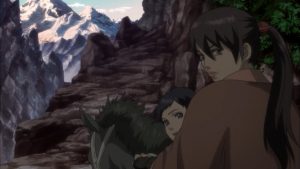


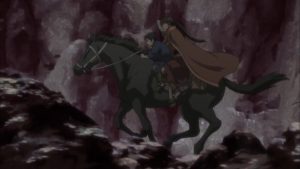
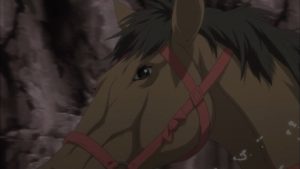

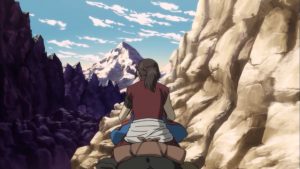


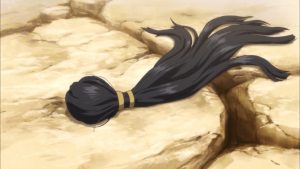
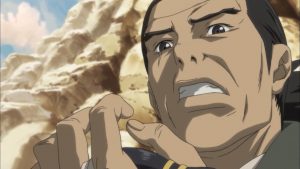

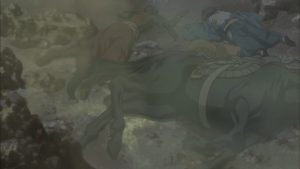

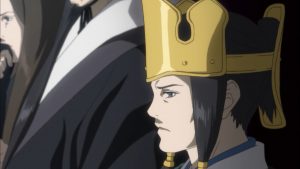
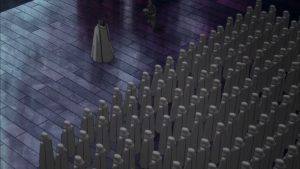


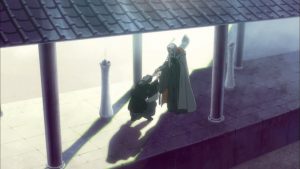

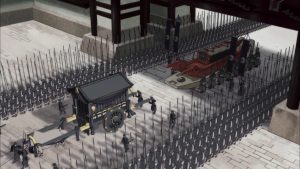


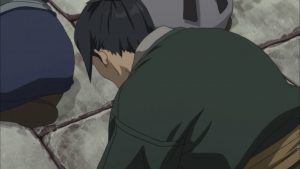


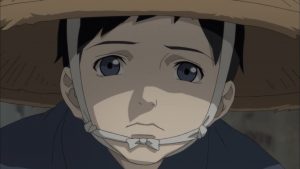


Panino Manino
May 16, 2020 at 6:12 amI’m surprised by how good the 3D is, that funeral scene is very impressive.
“First, Chagum stopping Balsa”
You’re right, Chagum isn’t just a passive victim, he is an individual with this own mind. This isn’t only Balsa’s struggle to protect him, Chagum also have a lot to think and do personally.
“The Hunters engaging in silent meditation”
This sells him as deserving to the tittle of the best warriors of the kingdom. They understand fast that Balsa had anticipated the wide scale search, took part on it would be useless. She already outsmarted them and the time was running out, they needed to catch up with her because they could do something.
This scene also continues to further the point that there are no bad people in this story, just good people trying to do their best. Besides makes you think why Balsa doesn’t kill, after she had said that she stopped killing in the previous episode. We can understand not wanting to kill for nothing, but even in dire situations like those? Wouldn’t be acceptable to kill them?
Also, did you noticed “him”? It’s fast and not very clear at the time, but there was one person that was particularly interested on finding Balsa. Not the criminal, but Balsa specifically.
“The chase sequence in the Aogiri Mountains”
This scene always confuses me. It’s incredible that now, finally, I’m able to see the different cloth on the Wolf’s mouth and on the decoy. Seriously, I watched that scene many times and my brain never processed that detail! I knew that the change had happened during that turn when they get out of Mon’s eyesight fora few seconds, but maybe it’s because of this that I didn’t see the other signs after this.
“Tanda’s rant when the two foot soldiers come to the hut”
This and the final scene. Balsa really needs to be so cruel with him? I know she has his reasons, but is she trying to make Tanda hate her? Even after the episode with the slave dealers she still didn’t said anything to him, leaving him believe that she would went far away and could die. I don’t understand why she needs to be so hard with him.